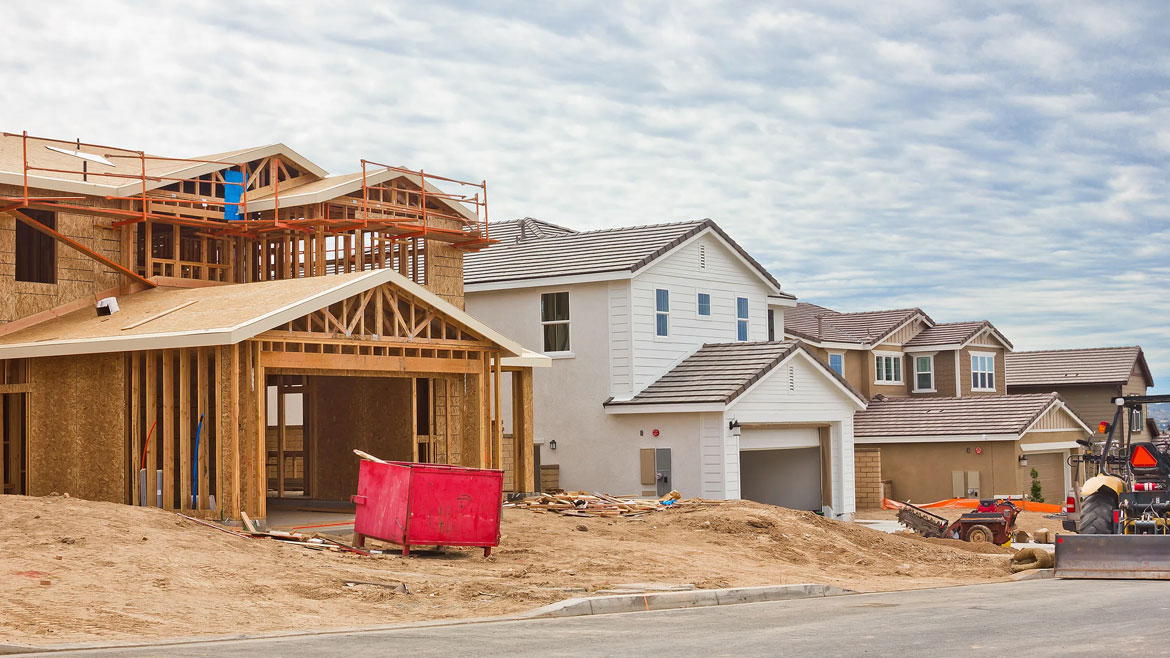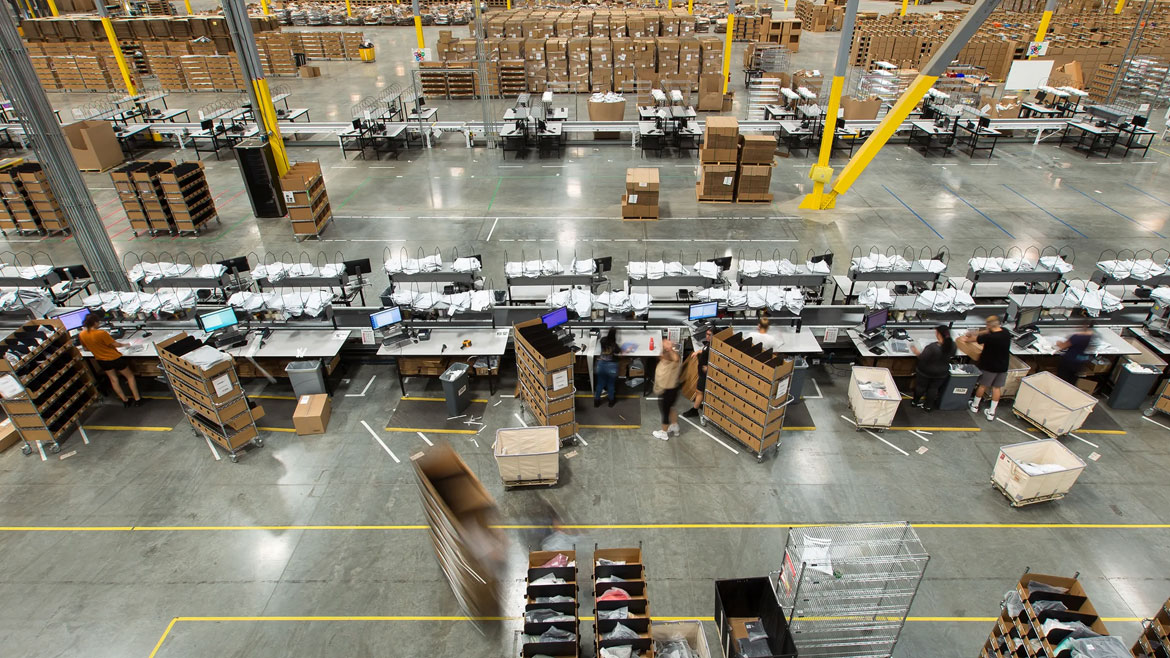Due to uncertain economic factors and an unpredictable supply chain, forecasting continues to be difficult for PHCP-PVF professionals. Heading into 2023, experts remain optimistic about the health of the PHCP-PVF market despite a few impending factors: a possible recession, inflation, ongoing labor concerns, price increases and supply chain disruption.
“We are always optimistic about the future, but we are not looking through rose-colored glasses,” says Tim White, director of marketing for Utah-based Mountainland Supply. “We see the impending issues, but we are confident that we will continue to grow, be profitable, and have great opportunities in 2023.”
In terms of market demand, experts agree that there will be sectors with high demand and sectors that will experience slowdowns. “It is going to be choppy through the first half of the year as interest rates settle down and we will need to keep a watchful eye on the back half,” says Bill Weisberg, chairman and CEO of Affiliated Distributors (AD). “We may find out that we are already in the first half of a recession. There will be a leveling of demand, as some markets are going to be up, and some are going to be down.”
Jeff MacDowell, executive director, Luxury Products Group (LPG) expects an overall healthy market throughout 2023. “I expect the market to remain healthy in 2023 with single-digit growth overall. I don’t anticipate as much doom and gloom as many are predicting.”
 JohnnyH5 / iStock / Getty Images Plus via Getty Images
JohnnyH5 / iStock / Getty Images Plus via Getty Images
CONSTRUCTION STARTS: RESIDENTIAL AND COMMERCIAL
All eyes are on interest rates as 2023 kicks off. Forbes predicts that the worst mortgage rates were left in 2022. PHCP professionals agree, noting they don’t expect rates to rise in 2023, but the residential new construction market will continue to cool.
“In late 2022 with the rising interest rates, we have seen a slowdown in the housing market,” says Jeffrey Beall, president, AD PHCP Business Unit. “At this point we can say conservatively that it is looking like the residential new construction markets will be down most likely in the high single digits for 2023.”
White agrees, noting residential new starts were already down in late 2022. “We are already seeing the effects of higher interest rates coupled with inflation. We are seeing a significant slowing of pace of new housing starts compared to the past five years,” he says. “However, there is still a significant amount of building happening in the Utah and Idaho regions.”
While new residential construction slows down, MacDowell notes that remodel and higher-end custom home starts will continue to be an area of opportunity. “I expect multifamily housing to slow up, but mid to high custom homes to increase. Overall, I think it will be flat with dollars, since the high custom homes will keep rolling strong,” he explains. “People with money will spend it wisely. This should be great for showrooms dedicated to selling better products.”
According to these experts, demand for more multifamily housing and additional commercial infrastructure throughout many areas of the country will lead to high demand in the commercial sector in 2023.
“We are seeing many of the residential plumbers and contractors jumping on the bandwagon for commercial projects, and building of much needed multifamily units in this area. There is still plenty of demand to move to the west,” White says. “Demand for commercial spaces and rising suburban areas are requiring more infrastructure. High prices and interest rates are creating opportunities for low-income housing, which means we should expect to see lower profit margins this coming year.”
Beall agrees, saying some commercial building projects will thrive while others slow down. “The multi-family pipeline will remain strong even as interest rates continue to rise — although more slowly — throughout the year as an offset to single family housing cost. The commercial construction markets for education, hospitals and data centers will be solid but corporate office buildings, commercial retail space and some warehousing projects will slow. The hybrid work from home model will contribute to the slowdown in commercial spaces.”
When it comes to product trends, indoor air quality, integrated technology and decarbonization will be key drivers for both the residential and commercial markets.
“In both residential and commercial markets, the necessity for healthy indoor air quality (IAQ) is paramount as IAQ shifts from a pandemic precaution to a method of enhancing overall well-being,” says David Budzinski, president, global residential & light commercial, Johnson Controls. “The 2022 American Home Comfort Study revealed homeowners were willing to spend 65% more on IAQ now than they were just a few years ago. Wellness, ventilation, indoor air quality, thermal health and humidity make up half of the nine key pillars of healthy commercial buildings identified by the Harvard School of Public Health. These findings, coupled with the launch of the U.S. Environmental Protection Agency’s (EPA) Clean Air in Buildings Challenge, make HVAC performance and healthy indoor environments more important than ever before.”
According to Renee Eddy, vice president of innovation, Rinnai, all markets will see emphasis decarbonization and the ability to utilize technology to create reliable products. “Across the globe there has been a recognition that the plans originally put in place to meet our decarbonization goals need to be expanded and accelerated,” she says. “This is driving changes within businesses — from the products being developed to how business is being conducted — and in our daily lives. We expect to see legislations continue to drive accelerating these changes in 2023 and beyond.”
 halbergman / E+ via Getty Images
halbergman / E+ via Getty Images
SUPPLY CHAIN STATUS
Some good news: PHCP-PVF pros expects the supply chain to be better than the past couple of years. MacDowell says suppliers have “figured it out,” so the supply chain is running smoother. “The supply chain will be better – I think the suppliers have it figured out and are moving to countries where shipping is more favorable,” he says. “It still won’t be perfect. This is good for showrooms where consumers are used to waiting long lead times anyways.”
White says vendors are catching up and overcompensating for previous lead times. “Overall, it seems the manufacturers are catching up. However, there are some areas that continue to have very long wait times — typically more specialized areas of our business,” he says, “Mostly, we are seeing the inventories replenished because vendors over-compensated for their deficits and now there is surplus sitting in their warehouses in the states. I expect that over this year we may see some prices actually come down depending on certain vendors’ inventories.”
AD also predicts the supply chain will continue to improve throughout 2023. “We expect the supply chain to continue to improve with the availability of product. However, we see this happening differently from category to category,” Weisberg says. “We are still facing energy cost challenges in some areas, compounded with the factors that are in play around labor and freight cost.”
“Strong brands will always win the day. I think the average consumer and contractor is concerned about rising prices, but they will see that universally. No one can escape it. Being the lowest price leader isn’t necessarily what they are looking for.”
– Tim White, Mountainland Supply
ECONOMY AND CODES
Labor and freight costs are among the list of economic factors that will impact the market this year. Experts caution PHCP-PVF professionals to keep an eye on both U.S. factors and the global economy.
Weisberg adds infrastructure and transportation to the list of U.S. concerns. “On the U.S. front we continue to believe the lack of infrastructure, labor, freight and transportation will be the most important challenges,” he says. “China’s past lockdown strategy has restricted their consumption of products which has helped the U.S. from a lack of resource availability. You also cannot turn a blind eye to the disruption the war in Ukraine/Europe is causing, especially with the energy and oil and gas costs.”
According to White, a recessionary period could be a time of opportunity. “Whenever there are thoughts of a recession looming there are those that seek opportunities,” he says. “You’ll see global and local opportunities for acquisitions, mergers and companies buying up market share. In some areas of our industry there is not enough competition, and others there is too much. Recessions tend to balance those scales and the stronger companies use these times to grow.”
MacDowell says not to write off the impacts of COVID just yet. “COVID is still a significant disruptor and shouldn’t be taken lightly on impact to the economy,” he says. “Labor shortages are the other big thing. Lack of tradesmen and showroom sales consultants and warehouse employees will continue to present challenges.”
There are also several codes, standards and legislation proposals that could impact the PHCP-PVF supply chain in 2023.
On the HVAC side, Beall brings up changes related to Seasonal Energy Efficiency Ratings (SEER). “Effective January 2023, all regions of the US will increase by the equivalent of one SEER in 2023, which will result in a lower amount of electricity used for the same amount of cooling,” he says. “The South and Southwest will increase from 14 to 15 SEER and the North will increase from 13 to 14 SEER. Equipment will cost more in 2023 due to these changes.”
Budzinski points out that 2023 marks the launch of increased Department of Energy (DOE) standards for both residential and light commercial applications. “It’s critical that contractors understand which region they’re located in – as specified by the DOE – and the types of products they can install based on the region’s efficiency requirements. Region will also determine whether product compliance is based on date of installation or date of manufacture.”
Of course, the implications of Biden’s Infrastructure Investment and Jobs Act are top of mind in 2023. “The Fair and Open Competition Act protects federal and federally assisted construction contracts from government-mandated project labor agreements and will allow merit shop contractors to have a fair chance at competing to rebuild America. With 87.4% of the private construction workforce choosing not to belong to a union, PLA mandates discourage experienced contractors from competing to win taxpayer-funded contracts to rebuild their communities,” White explains.
“As the Biden administration begins to implement the $1.2 trillion Infrastructure Investment and Jobs Act and other legislation funding public works construction projects, we are concerned with their record of favoring the expansion of government-mandated PLAs on federal and federally assisted construction projects,” he continues. “Policies promoting or mandating PLAs will needlessly increase construction costs and result in fewer infrastructure projects and jobs created by federal investment in America’s roads, bridges, schools, water and energy infrastructure.”
 SDI Productions / E+ via Getty Images
SDI Productions / E+ via Getty Images
TECHNOLOGY AND BUYING HABITS
According to these PHCP-PVF professionals, artificial intelligence (AI) and online buying will continue to lead product and consumer trends in 2023.
“Artificial intelligence at some level has a role to play across every industry including PHCP-PVF. Self-learning systems are the core technology for understanding and recognizing problems before they occur,” Rinnai’s Eddy points out. “Looking at the labor shortages across the industry putting in place items like augmented reality that can allow resources to be in multiple places at the same time can help to address labor shortages while creating a more engaging work environment. Automation in general can also help with labor shortages. At the same time, we need to keep in mind that keeping the technology operating also requires resources.”
Budzinski agrees, saying AI helps solve common pain points with construction jobs. “We are seeing AI-powered building automation systems move to the edge. Through a type of distributed computing and an advanced technology called Edgification, this edge infrastructure has the processing power AI demands and is installed on premises, reducing issues related to reliability, security and latency as well as costs.”
Mountainland’s White says some distributors need to do a bit of catching up when it comes to technology. “Significant strides are taking place with product technology to make the homeowner and business owners lives easier, more efficient, and to enhance their environments. Manufacturers that have already been focused on that and we will continue to see innovation there,” he says. “Within our supply houses I think we have lagged behind. There are many technologies out there providing robotic picking and data-driven warehouse management, but the small mom and pop shops have been slow to embrace the change necessary to keep up.”
While automation and AI take prescience in manufacturing to combat labor shortages, e-Commerce serves as both a tool and a challenge for wholesaler-distributors.
When it comes to websites and e-Commerce, MacDowell says companies should use their online presence as a driver for foot traffic. “Consumers continue to shop online but at some point want to visit in store to see the quality of the products. Having a website that gives the consumer a feeling of exactly what they can expect when they arrive is critical,” he says. “3D showroom tours, pictures of the team, online appointment capability are all necessities today.”
Weisberg also points to e-Commerce has a way to modernize business. “E-Commerce efforts also streamline the way members are doing business changing the way of a traditional transaction.”
Beall adds that although manufacturers continue to ship direct to customers, the service and inventory security of wholesaler-distributors will continue to prove their value in the market.
“We are seeing manufacturers continuing to ship direct to consumers through their online platforms and this will affect the wholesale business,” he says. “But the services and availability of inventory will anchor the traditional wholesaler as the best option for project management. Wholesalers having an online presence will continue to make it easier to service contractors.”





